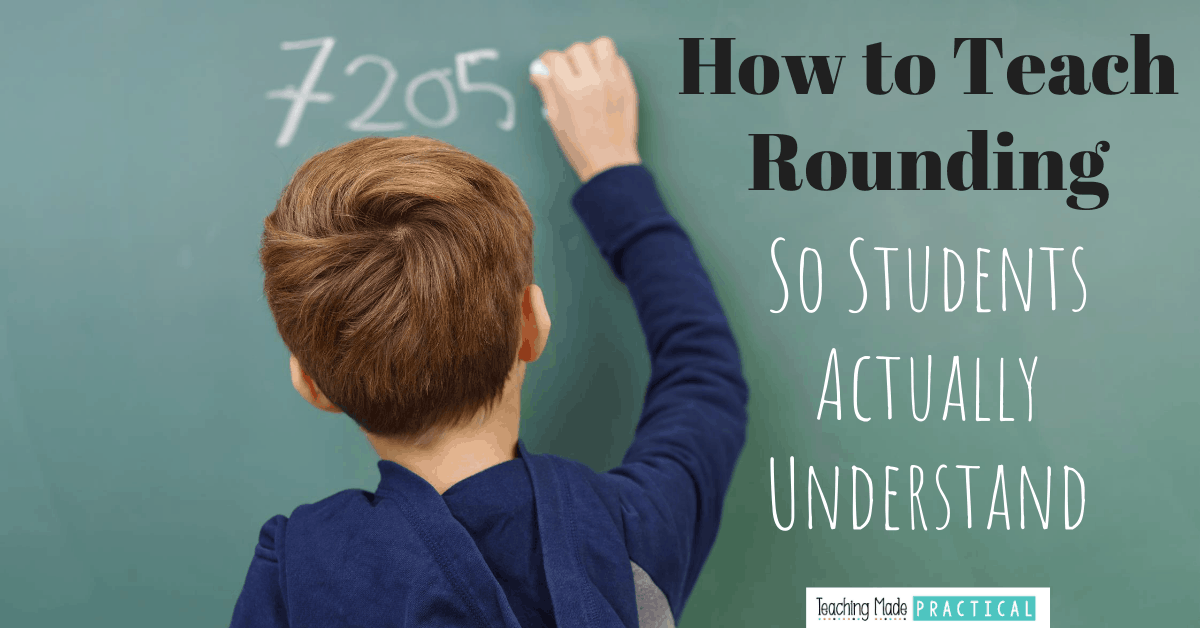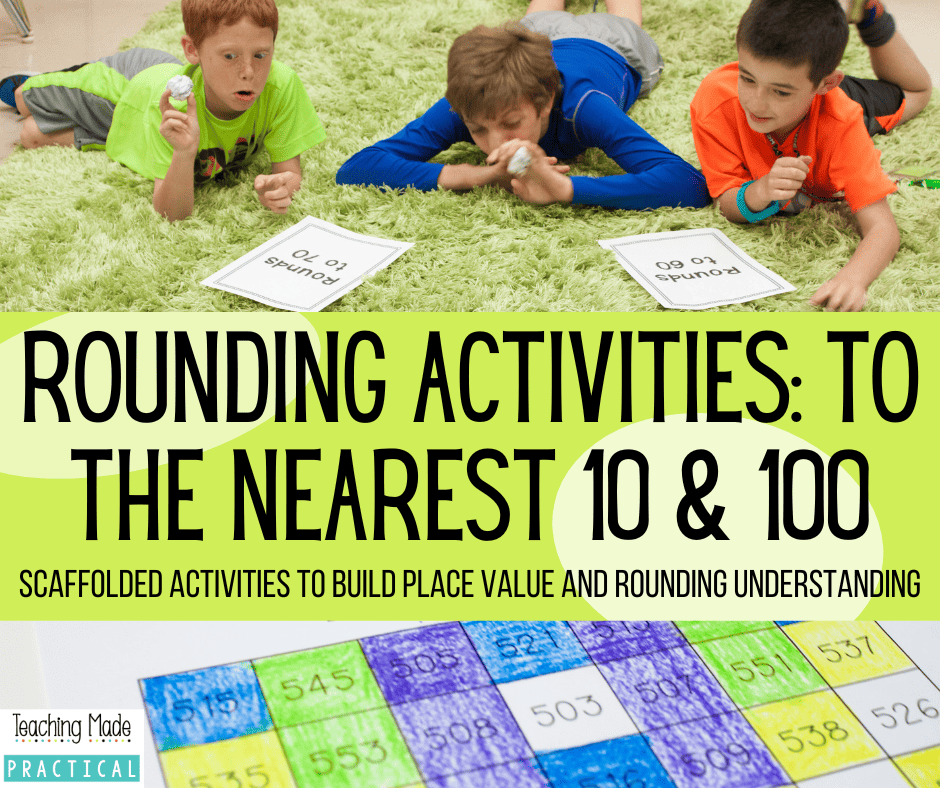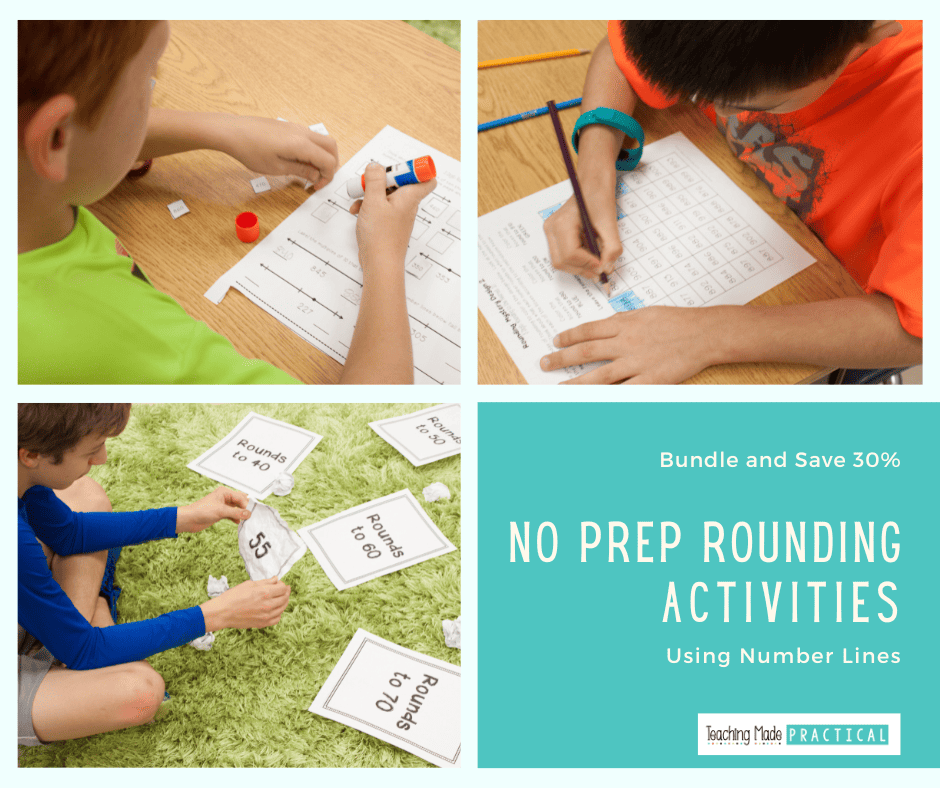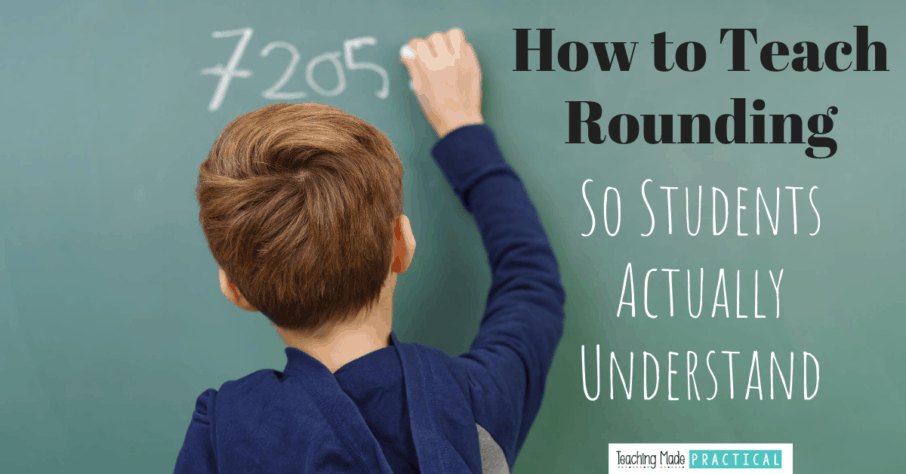
Teachers use all sorts of tricks to teach students how to round - tricks like rollercoasters, raps, step-by-step anchor chart instructions, rhymes, underlining digits, and more. Teaching rounding using easy tricks is a short term solution, though.
If you have to use tricks in order for students to understand rounding, then your students are showing you that they have some gaps in their place value understanding.
Rounding essentially boils down to which number is closest. If your 3rd grade or 4th grade student doesn't know that 137 is closer to 100 than it is to 200, then teaching a special trick instead of addressing their place value gap is hurting them in the long run.
Teach Rounding Using Open Number Lines
Teaching students to round using open number lines is a much better long term plan than using tricks. This will not only help them with their rounding skills, but it will also help strengthen their place value understanding. They can use what they have learned about creating open number lines as they progress to more difficult math skills.
An open number line is simply a number line that starts off empty. Students fill in the number line and build on it based on the problem they are trying to solve.
If students have the ability to draw out an appropriate open number line when rounding to the nearest 10, nearest 100, or nearest 1,000, they will easily be able to see visually what number is closest. Rounding will be easy!
Introduce Rounding Using Scaffolded Number Lines
If your students are struggling with place value skills, then asking them to start using and creating open number lines without any scaffolding will be frustrating. Scaffold this skill by providing partially filled in number lines that focus on certain place value skills students struggle with. Some examples are below to help you as you create your rounding lesson plans.
The place value skills that most students struggle with related to rounding are determining the midpoint between two multiples and determining what two multiples (of ten, hundred, thousand, etc.) a number is in between.
This might take a little longer than teaching students a quick trick, but the place value skills it reinforces are invaluable, especially as students tackle more difficult math.
Determining the Midpoint Between Two Multiples


Determining What Multiples (Of Ten, Hundred, Etc.) A Number is In Between

Once students are able to do these two rounding activities successfully, then they probably have the place value foundation to be successful rounding to the nearest 10, the nearest 100, and the nearest 1,000 using open number lines.
This rounding resource has no prep activities that practice these skills so that you can minimize your prep while maximizing student learning.
Now, students just need some guidance drawing their own number lines when rounding. Model how you would draw your own number line in order to solve different rounding problems before expecting the to do it independently. They will also need some instruction on how to round the midpoint since it is equally close to both sides.
How to Help Students Whose Rounding Skills Are Lacking
If your 2nd, 3rd, or 4th grade students are not able to do these two activities, then they will need practice with different place value skills, depending on where they struggle.
Sometimes, students just need a little more scaffolding and practice before moving on. Have them practice filling in missing pieces on all sorts of number lines. This will help them build a foundation for all sorts of skills, not just rounding.
I have found that most students struggle are actually able to do these activities using smaller numbers, but not larger numbers. This told me that my students had a solid foundation for numbers less than 1,000, but needed practice with numbers greater than 1,000.
To build place value understanding for numbers greater than 1,000, do the same things you would do to practice smaller numbers. Practicing counting by different multiples is an easy, no prep activity that can be done anytime you have an extra couple of minutes or you are waiting in the hallway. For example,
- count by 1s starting at 3,589
- count by 10s starting at 2,000
- count by hundreds starting at 60,200
- count by thousands starting at 77,400
You should do activities like this both orally and written. You might be surprised at how your students struggle with counting numbers larger than 1,000 - even counting by 1s - when they have to write it out.
Have students use a blank number grid or personal whiteboards and dry erase markers to count for a quick, no prep activity.
If you think your 2nd grade, 3rd grade, or 4th grade students could use some extra scaffolding as you teach rounding, then see if this Rounding to the Nearest 10 and Hundred Bundle would fit their needs.
This resource includes hands on, scaffolded activities to help your student become successful rounders. It starts small, starting with numbers less than 100, and gradually builds to larger numbers. Students practice finding midpoints, labeling different parts of a number line, identifying the multiples of ten, hundred, or thousand that a number falls between, and more.

The resource leads students to draw their own number lines and eventually to round without any number lines at all.
It also includes fun whole class activities - snowball fights and scavenger hunts - as well as independent activities and activities that could be done in centers.
You can also use this resource to help you differentiate. Your struggling learners might need to start with the basics, while your learners who already have a solid understanding of rounding can do the more advanced activities.
Check out these other tips for scaffolding your instruction so students understand.
Free No Prep Math Practice!



Comments 2
How do you join your website?
Author
Hi Gabrielle!
If you would like to get on my email list for free resources, ideas, and info on sales, you can do that here.
Or, if you are wanting information about accessing all of the resources in my Members Area, you can find out more here.
If you have any questions, feel free to contact me!